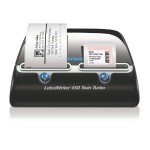Data Backup Best Practices
I’d like to point out the need to set up a protocol to check what’s on the backups since there are common errors. Obviously, you should have backups both on-site, for fast local restore, and backups off-site, for ‘geo-redundant’ safety. Sometime the data files you need to backup are not really where you think they are.
1.1 SQL databases aren’t being properly backed-up – sometimes there is no .bak file available. If you just copy files when backing up, the file may not be there to backup. A SQL script is necessary to write the secure data inside the SQL database to an external .bak file.
1.2 The SQL backup (.bak files) are stored on the same disk drive as the SQL database. When the drive fails you also loose the backup.
2. Archived data is taken off of the cloud. For example, even though email may be hosted ‘ in the cloud’ it may have substantial archived data located only on the local user PC. Last week we know where a firm had five PC’s stolen including a user whose PC had 9GB of email and attachments archived i.e. only stored on her local PC.
Fortunately the PC was imaged and the data was recovered, but most firms don’t image their PC’s.
Maybe the formula for backup is best expressed as: DD + I = S@N (Where DD is Due Diligence, I is + Insurance = S@N is Sleep at Night)
Here are some best practice suggestions for your backups:
Designate one person to check for the presence of a reasonable quantity of files, monitor total GB being backed up, look for the critical .bak for SQL databases and keep several recent backups plus monthly and yearly backups in case to go back to a prior point in time. If possible, have your backup protocol include the forwarding of a daily email status report to a designated individual(s).
For additional peace of mind ‘image’ PC’s and the file server(s). Software to do this includes use of of Microsoft’s VSS (volume shadow service), or Apple’s Time Machine. I know the Windows image approach only stores the same file one time, even if it is on ten PC’s, so it is very efficient. An advantage of imaging is if for example a hard drive failed the image can be used to restore data and it will actually re-install all of your programs too. That can save a ton of time. (Note: Imaging should not be used as a replacement of on and off site backups.)
Some practice management programs let you create a clone file or an automatically synchronized second database that replicates all of your critical calendar, contacts, matters, and related records including email, notes, documents, phone and billing records and related files (such as .pdf, .xls and .anx).
Check your insurance to see how much coverage you have for the next time you have an event – fire, flood, theft, malware, malcontent, solar flare etc.
When it comes to backups you really do need a plan a, plan b and maybe a plan c. Hopefully these suggestions will help you identify what the right backup protocol should be for your office.
Tom Caffrey
Premier Software
www.premiersoftware.com


